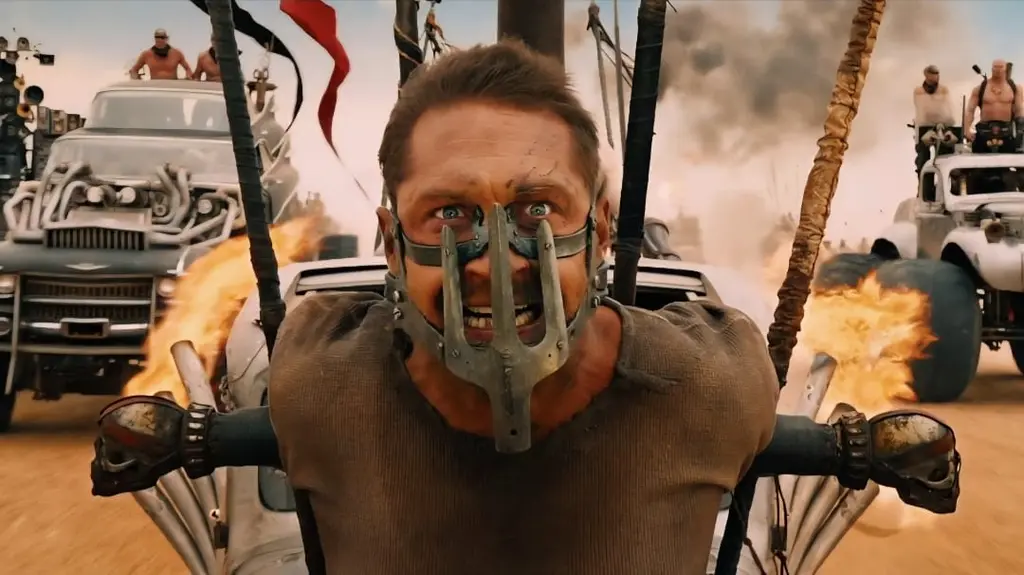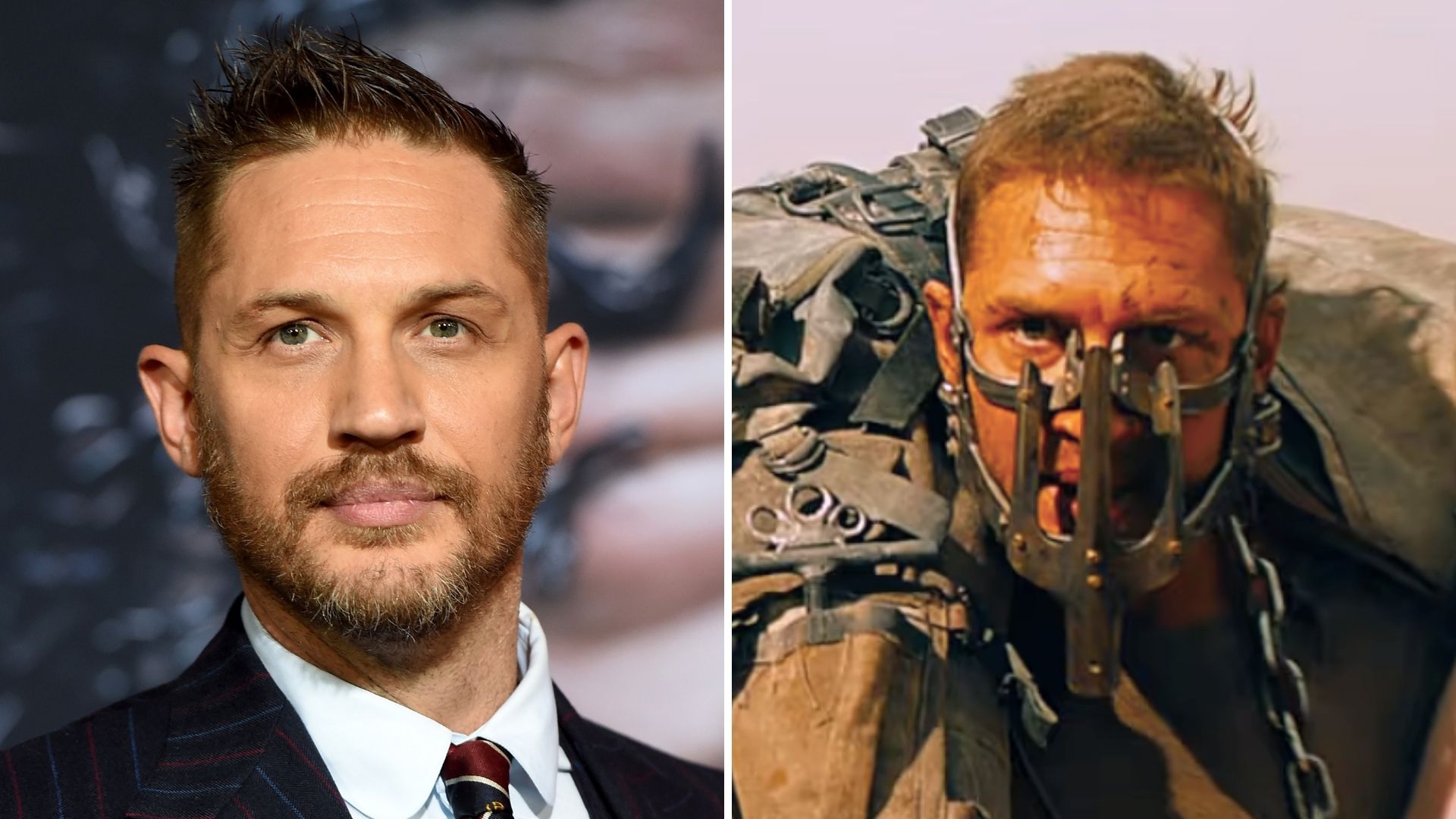Mad Max: Fury Road (2015)
- movieslovers
- July 19, 2025

Related Movies:
Related Movies:
Related Movies:
Mad Max: Fury Road (2015) – Then and Now
Then: The Impact of Mad Max: Fury Road (2015)
Released in 2015, Mad Max: Fury Road marked the return of George Miller’s post-apocalyptic franchise that had originally begun in 1979 with Mad Max and continued with The Road Warrior (1981) and Mad Max: Beyond Thunderdome (1985). The fourth installment, after a 30-year gap, exceeded expectations and redefined action cinema, becoming an instant classic.
Plot:
Set in a dystopian desert wasteland, the story follows Max Rockatansky (played by Tom Hardy), a lone wanderer haunted by his past, who gets caught up in a high-speed chase led by Imperator Furiosa (played by Charlize Theron). Furiosa, a rebellious warrior, frees a group of young women, who are used as “breeders” by the tyrannical warlord Immortan Joe (played by Hugh Keays-Byrne). Together, Max and Furiosa must survive relentless battles against Joe’s army as they try to escape to the promised land. The film features a world of violent warlords, modified vehicles, and stunning visual storytelling.
Why It Stood Out (2015):
-
Visual Masterpiece: Mad Max: Fury Road was a visual feast, with practical effects, explosive car chases, and stunts that were filmed in a way that hadn’t been seen before. The action was grounded, visceral, and relentless, making the film stand out in an era dominated by CGI-heavy blockbusters.
-
Feminist Undertones: The movie was praised for its strong, empowered female characters, particularly Furiosa, who emerged as a central figure in the narrative. Her character was not just a sidekick to Max but a leader in her own right.
-
Stunning Action Sequences: The film’s chase scenes and vehicular warfare were choreographed to perfection. The use of practical effects and stunts instead of relying on CGI gave the action a tactile, gritty quality that felt more authentic and immediate.
-
Acclaimed Direction: George Miller, the mastermind behind the franchise, directed Fury Road with an uncompromising vision, combining high-octane action with deep emotional stakes, all while maintaining a striking visual style.
-
Critical and Commercial Success: Fury Road was universally praised by critics, receiving 10 Academy Award nominations, and winning 6 Oscars, including Best Editing, Best Costume Design, and Best Production Design. It grossed over $375 million globally, making it one of the highest-grossing films of 2015.
Now: Mad Max: Fury Road’s Legacy
Enduring Cultural Impact:
-
Mad Max: Fury Road has solidified its place in cinema history. It is regularly cited as one of the greatest action films of the 21st century and has a massive influence on modern filmmaking. Its minimalist yet emotionally charged story, combined with its stylistic visuals, has inspired countless filmmakers and action movies.
-
The film’s feminist undertones have sparked significant cultural discussions, with Furiosa’s character often cited as a feminist icon in modern cinema. She was a central figure in a film where women were not mere plot devices but fully realized, complex characters.
-
Fury Road also reinvigorated the Mad Max franchise, paving the way for future stories set in the same world. Following its success, a prequel film, Furiosa, has been announced, directed by George Miller, with a cast led by Anya Taylor-Joy in the titular role.
Influence on Action Cinema:
-
The film’s emphasis on practical effects over CGI influenced subsequent blockbusters, proving that practical stunts and vehicular mayhem could still have a place in modern cinema. Movies like Fast & Furious: Hobbs & Shaw (2019) and The Fate of the Furious (2017) owe some of their high-octane action style to the legacy of Fury Road.
-
Fury Road has also become a benchmark for the use of color in film, with its distinctive sepia-toned desert landscapes, blood-red skies, and vibrant costumes. Its visual style has been widely discussed and has influenced other films in how they approach color grading and design.

Tom Hardy’s Max vs. Mel Gibson’s Max:
-
Tom Hardy’s portrayal of Max is quieter and more introspective than Mel Gibson’s version in the original films. Hardy’s Max is a man of few words, haunted by his past, and has more of a supporting role compared to the earlier films. Although his performance was widely praised, some fans still prefer the rebellious, fiery nature of Mel Gibson’s portrayal from the 70s and 80s. Nonetheless, Hardy’s Max, as a tortured antihero, resonated with a new generation of moviegoers.
Charlize Theron’s Furiosa:
-
Furiosa’s role in Fury Road has only grown in importance since its release. Her character is widely regarded as one of the best-written female action heroes in recent memory, and she remains a symbol of strength, resistance, and leadership. Furiosa was celebrated for her complexity and was a powerful contrast to the male-dominated action hero landscape.
-
The planned prequel film, Furiosa (2024), will explore the backstory of this beloved character, deepening her mythology and expanding her role in the Mad Max universe.
The Future of the Mad Max Universe:
-
Following Fury Road, George Miller announced a Furiosa prequel, which is set to explore the rise of Furiosa before she meets Max. The prequel, starring Anya Taylor-Joy, Chris Hemsworth, and Yahya Abdul-Mateen II, is highly anticipated and promises to bring more of the same brutal action and character-driven storytelling that made Fury Road such a hit.
-
In addition to the prequel, there has been talk of potential sequels, continuing the Mad Max saga, but Miller has stressed that he doesn’t want to rush the process and only wants to continue the series if the story is right.
Conclusion: Then and Now
Mad Max: Fury Road remains a game-changer in the world of action films. Its success at the box office, critical acclaim, and lasting cultural impact are undeniable. What set it apart from other action blockbusters was its combination of visceral action with deeper themes about survival, sacrifice, and societal breakdown. The film’s stylistic choices, including its emphasis on practical stunts, gritty visuals, and feminist undercurrents, have resonated with audiences for years after its release.
Even now, Fury Road continues to influence filmmaking, with its impact seen in everything from the visual style of modern action films to the rise of strong female protagonists. George Miller’s vision has ensured that Mad Max remains one of the most important and influential franchises in cinematic history, and with a Furiosa prequel on the horizon, its legacy is poised to continue for many years to come.
Rating: 9.5/10
Legacy: A defining moment in modern cinema and a milestone in action filmmaking.











